In this update we feature:
• Opal Ocean – The Hadal Zone
• morrum – Death Of Amazement
• Eyot – 557799
• Violent Silence – Twilight Furies
• Secret North Ox – Deadwood Oscillations
• Shining Pyramid – Tree
Bob Mulvey
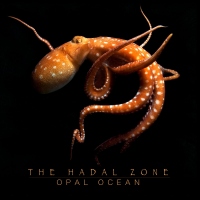
Love this album! Opal Ocean’s The Hadal Zone is a definite feel-good album, chock full of fiery infectious tunes which proved to be an absolute tonic during some of those ‘darker’ days of 2020. Released last October, Messrs Alex Champ and Nadav Tabak are a Melbourne-based acoustic guitar duo who take Flamenco inspired music from the depths of hadopelagic zone to the dizzying heights of the exosphere. Wonderfully ambitious tracks that pull in pop/rock sensibilities, which they then take on a relentless excursion that is both complex and listenable in equal measures.
What comes across on The Hadal Zone is the sheer enthusiasm of the duo, so while they are pushing the classical guitar to its limits they are infusing subtle textures, which engage the listener. Flamenco with a multitude of guitar effects: wah-wah, psychedelic Leslie, along with numerous other sounds including Mellotron and there’s even a Ruddess on one track. 😉
Throughout, Alex and Nadav’s enthusiasm is tempered with a liberal sprinkling of humour, not only within the tunes, but also the album’s titles give us an indication. The delightful Micro Rave or the percussive Bucket of Fish (it’s a drummer thing) and I’ll leave you to ponder Schmeckledy Pop…
On the surface, The Hadal Zone may not seem an obvious fit on TPA, one of the reasons we set up the ADA reviews section, however I would suggest that Opal Ocean are more than a comfortable fit and are truly progressing boundaries.
Another great Bandcamp discovery – do yourself a favour and check these guys out. Bob’s hot tips 🙂 : Polycephaly, the aforementioned Schmeckledy Pop and Micro Rave, and of of course the title track (video below)…
Nick Hudson
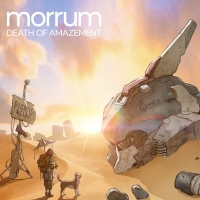
Until now, I knew only one Bulgarian band. Now I know two. The cover art of morrum’s Death of Amazement reminds me of the desert planet of Tattoine from Star Wars, and with imagery of a crashed spaceship and perhaps a scavenger like Rey, it seems appropriate as this album comes across as an eclectic mish-mash of scavenged parts, put together in unexpected ways. And just as you begin to think you know where the album is going, it changes once again, as something new is found and added to the mix. The album begins conventionally enough, with the first couple of tracks a wee bit post, a wee bit math, and with perhaps a jazzy fusion undercurrent. When vocals are introduced in the second track, it comes as a surprise. This didn’t seem to be an album that would feature vocals, but they work. There’s a sort of lazy, understated nature to them, and they add more of another layer or texture rather than taking the forefront. This groovy song will likely be a favourite for many listeners. It’s funky and playful, technical and catchy.
There’s some more laconic vocals on SLD, albeit considerably higher in the mix. While Lite came across as an instrumental track with vocals, SLD is an actual song. The title track features some nifty percussion, the first time I’ve really noticed the drumming of Yavor Lazov, as although it’s always been solid, Ari Ex and Simeon Zahariev demand a lot of attention as they almost race each other on bass and guitar (respectively) to set the groove. That groove on Death of Amazement is the heaviest yet, veering into prog-metal territory at times. When it returns to a jangly and melodic sound in the last minute or so, it’s strangely even more surprising. Honestly, by the time this comes to be, I’ve forgotten the band can sound like this. And from this point on, they really don’t again. No longer post-rock, it’s post-hardcore.
It seems this album has been created as two halves, with the first four tracks comprising the lighter side of morrum, and the second four the heavier. The Gap is another song, but it’s almost a thrash metal affair at times, and bloody hell, the band have even thrown in some harsh vocals as well, just so you know this is a different beast. I wonder how many people who enjoy the first half of the album will also enjoy the second? I do, for sure, but some listeners might find it a stretch. I don’t even have a preference between the two, and so different are they that it is really difficult to compare or judge between them. Nikolay Madzharov‘s vocal theatrics are to be commended though, as from the subdued vocals of the first half of the album, I’d never have expected to hear the growls, the falsetto metal screams, or impassioned rapping somewhere between that which you’d find on a Rage Against the Machine or At The Drive-In album. It’s crazy stuff, but crazy good!
Bob Mulvey

Strange how the most bizarre of things ‘attract’ you to an album. This fantastic release, from 2020, might well have slipped me by had the album title not caught my eye – and only then because it was very close to a previous home telephone number. Yes I know… anyway, I thought I’d check out my old number, although I already had a sneaky suspicion that 557799 may be more an indication of the time signatures employed. A quick listen to the title track (video below) confirms, and for those interested, the track is constructed using bars of 5s, 7s and 9s.
Brilliant! I’m sold, what else is on offer?
Dodola opens the album in fine style with Milos Vojvodic (drums) and Marko Stojiljkovic (bass) shuffling a Lopsy Lu type groove. Pianist Dejan Ilijic then weaves in his magic, taking on not only the majority of the chordal structure, but also the evocative themes, whilst guitarist Sladjan Milenovic adds in subtle, but oh so effective textures. Icing on the cake here is the brass.
Eyot are a Serbian quartet and 557799 is their fourth studio album released during the last decade. Across all those releases the band has remained the same, which I would suggest is why this latest release is chock full of assured and mature compositions.
Given that jazz and/or fusion are the most obvious genres for 557799 to drop into, it should be noted the album never becomes over-indulgent and remains refreshingly listenable throughout. Partly due to the rhythm section, who remain solid and engaging throughout, thus providing the perfect backdrop for Ilijic’s magisterial piano work. Dejan Ilijic’s piano, which he supports here and there with textured synth, is the linchpin of the Eyot sound, however the more I listened to this album the more I became aware of Sladjan Milenovic’s guitar work, and how integral he is.
Great album, which I found worked on so many levels. Subtle enough to form a relaxing background, but with the caveat that it always draws you back in – and NEVER becomes merely background.
Bob Mulvey
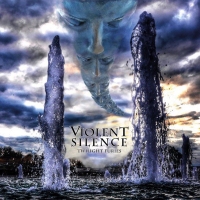
Sweden’s Violent Silence, formed just prior to the end of the last millennium, released their eponymous debut in 2003, followed two years later with Kinetic and a third studio album A Broken Truce in 2013.
All have evaded me, so with no preconceptions straight into Twilight Furies. Following a brief “sequenced” keyboard opening, we segue straight into the sixteen-minute epic Tectonic Plates. What initially impresses is the drumming that fuels this high octane track amply and secondly the keyboards which dominate, perhaps not surprising with two keyboard players. Lastly, and perhaps more importantly, are the timbres employed by Johan Hedman, which are predominantly percussive – marimba, vibraphone and xylophone spring to mind.
I’m going to stay with Tectonic Plates, as it pretty much encompasses the essence of Twilight Furies. The track works best, for me, in those ‘minimalist’ sections where the layers of ‘marimba’ come to the fore. There’s a prime example about a third of the way into the track where the sequenced keyboards come into their own, forming a busy backdrop for the more legato synths, which I believe are performed here by Hannes Ljunghall. Inspired!
Not to labour the point, however, the acceptance of the keyboard timbres is essential as to whether or not Twilight Furies is for you. I say this because initially they didn’t grab me. At this point we should address the other ‘possible’ elephant in the room – the vocals. My initial issue was that Erik Forsberg employs an aggressive delivery, but it is never really forceful. Maybe a mix issue, or perhaps it just feels incongruous to the multi-layered keyboard backdrop.
Mindful of the ADA wordcount, thus far, and with the following track which is a thirteen-minute mini-epic, I will perhaps lazily say that Scorched Earth Path follows in similar footsteps to Tectonic Plates. Breaking the mould are the short ballad Dance of the Shuriken and the album outro Perilous Borders. However, and without suggesting the album is formulaic, Scorched Earth and the title track encompass familial traits to Tectonic Plates.
There are parts of Twilight Furies that are truly inspiring, but for whatever reasons it didn’t fully strike home. Certainly it has all the prog requisites and I laud Johan Hedman’s sense of adventure, offering his own slant on the genre. And that in itself has to be admired…
Nick Hudson
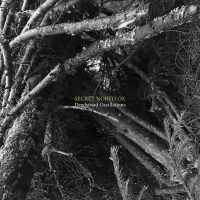
It’s funny how the mind works. Things I really don’t like in 2020 I can’t seem to get enough of in 2021. It’s odd because we are still living in the “year of the plague” (a la Daniel Defoe). It is not as if life has dramatically become different in 2021, yet psychologically it seems we somehow reset ourselves. I listened to a lot of drone and ambient music in 2020, but one of the albums that I expected to like the most gave me the least enjoyment. I put off writing a review for Deadwood Oscillations, by Secret North Ox, because I did feel as if the problems I had with it were down to me, rather than the music itself. And on renewed listening in a new year, as I seek to wrap up the last lingering releases of 2020 in my review pile, I find myself loving Deadwood Oscillations as much as I originally expected to. Honestly, I’m embarrassed it took me this long to realise its brilliance.
Secret North Ox is the alter-ego of Juho Niemelä, who is better known for being part of the rather good Finnish band Callisto. And, despite my initial rejection, Secret North Ox is just as good! The moods and textures of this album are far more varied than one might expect. And while the two collaborations (one with former Callisto member Arto Karvonen, and the other with Lauri Ainala – who I’ve not heard from since the magnificent Orpokotijuhlat Saarella a few years back) are definite highlights, there are other dark, ambient delights that more than match up to their grandeur. I still have trouble wrapping my head around the second track (and I think this is largely what switched me off the album last year), but from the moment the distortion leaves that track in the final moments, the album holds me fast in its grasp, and I don’t want it to let go.
Bob Mulvey
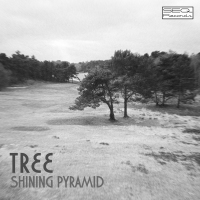
London based duo Shining Pyramid released their third studio album just before the festive season in 2020. With Tree the duo of Nick Adams (guitars) and Peter Jeal (synthesisers) present us with 40+ minutes of sonic soundscapes intermingled with some grittier and rockier instrumentals.
I would suggest the most obvious influence would be Tangerine Dream, although to these ears, some Floydian moments could be detected here and there. It’s in this sphere that Messrs Adams and Jeal are at their strongest, with Jeal’s sequenced keyboards and lush pads – ebbing and flowing, supported by Adams textural guitar. Weird Science is a prime example, as is the album’s longest track Like Katriona. A nice contrast comes half-way through Like Katriona when the guys pick up the tempo and the track bounces and ‘echoes’ to the finish line.
Given that Tree loosely draws inspiration from Arthur Machen’s 19th Century horror novel, The Three Impostors, might explain the inclusion of the rockier tracks, which for me didn’t work quite as well as their atmospheric explorations. That said the album closer Joy?, with its blend of over-driven guitar set against Mellotron, organ and synths, does make a powerful and stately exit.

